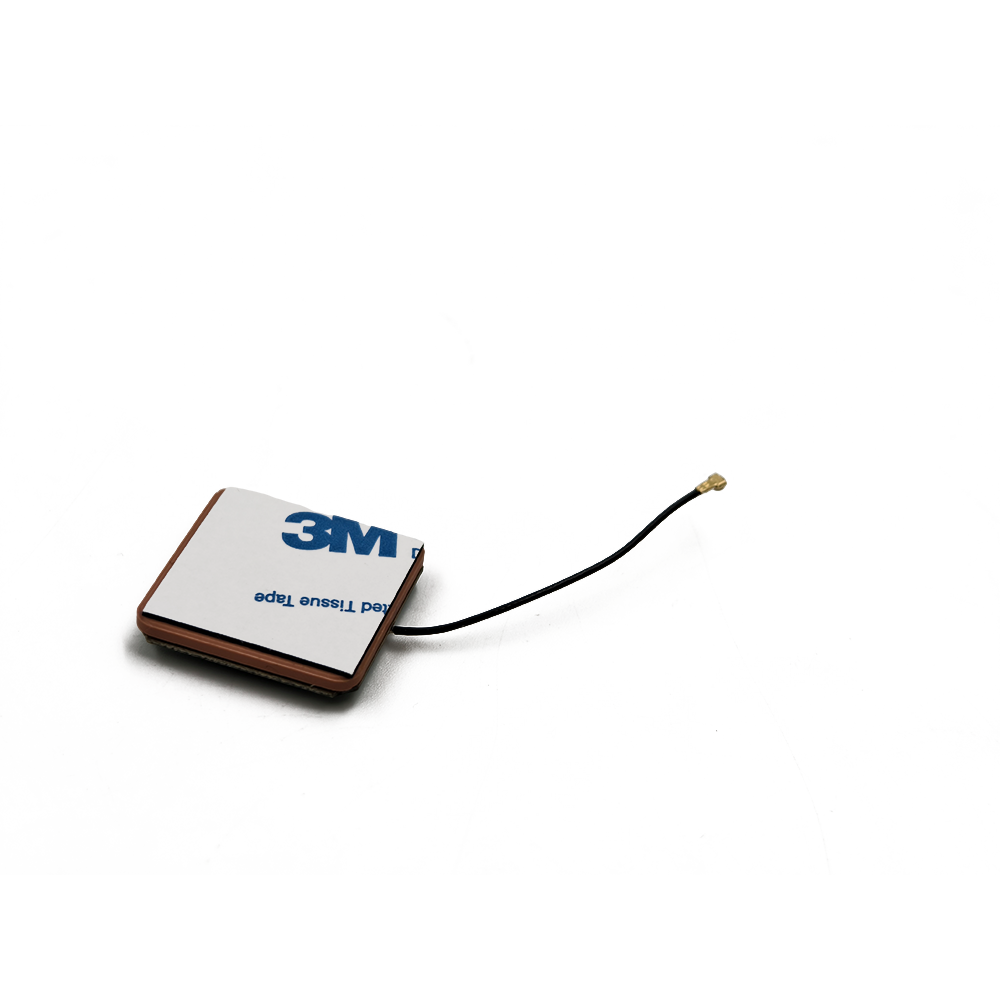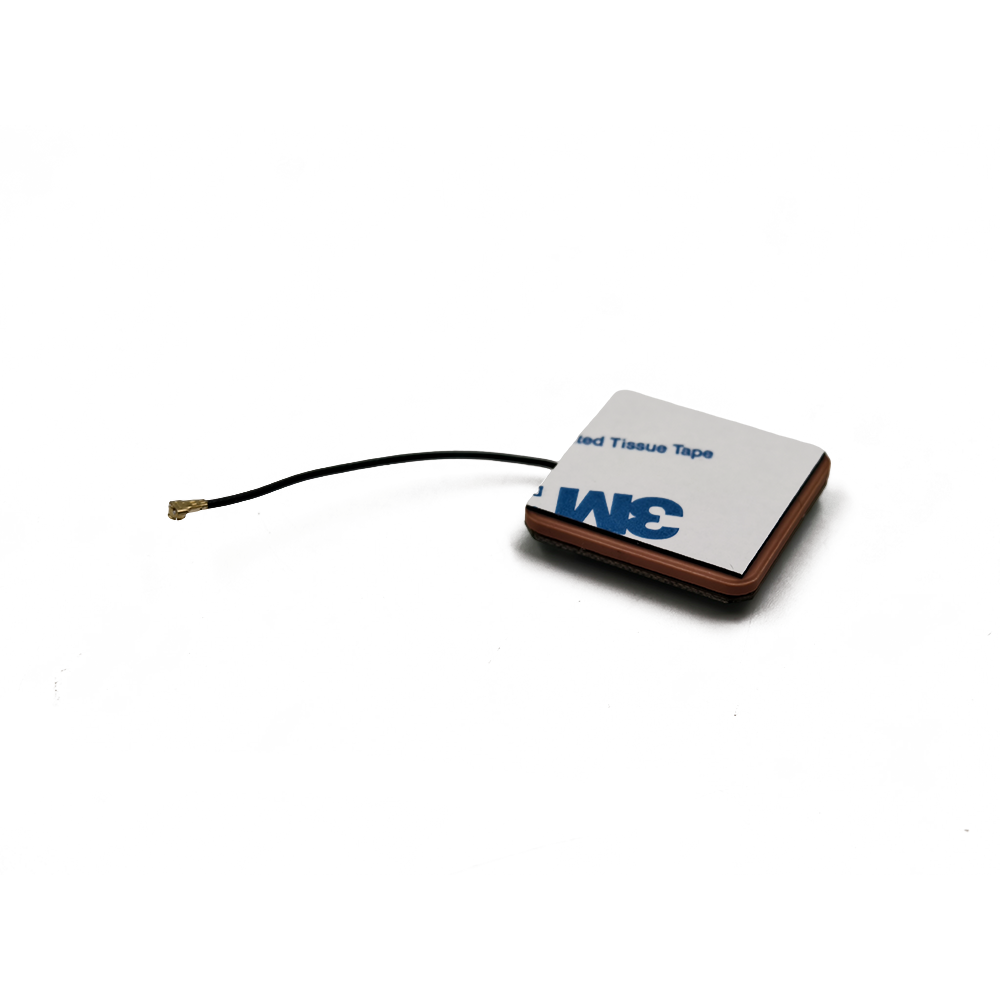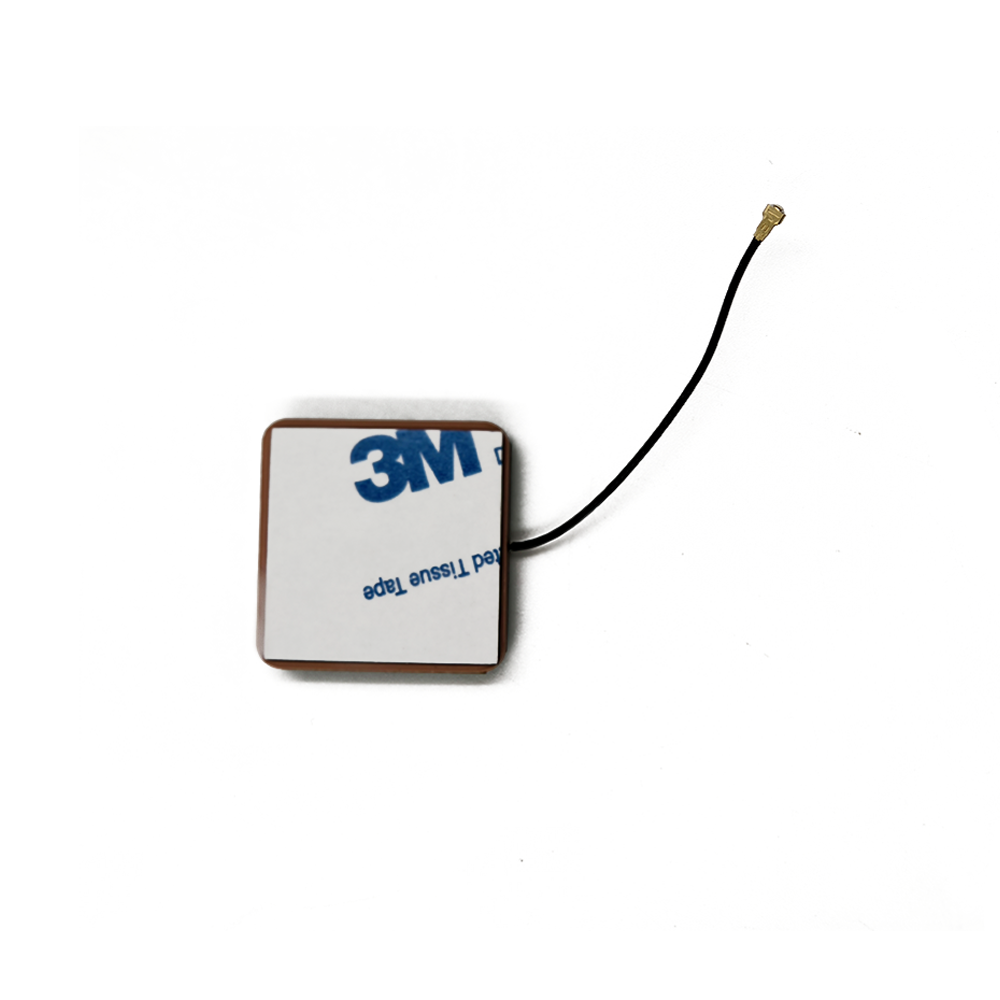defining features of this antenna
One of the defining features of this antenna is its passive connectivity via a pin feed. Passive antennas do not include built-in amplifiers, relying instead on the receiver’s ability to process the incoming signal. This design choice reduces power consumption and complexity, making the antenna suitable for battery-operated devices such as smartphones, fitness trackers, and asset trackers. The pin feed mechanism ensures a secure and stable connection to the receiver, minimizing signal loss and ensuring consistent performance.
Polarization is a critical factor in GNSS antenna performance, as it determines how effectively the antenna can receive signals from satellites. This antenna utilizes right-hand circular polarization (RHCP), which is the standard for GNSS applications. Satellites transmit signals with RHCP, and using an RHCP antenna ensures maximum signal reception. Circular polarization is particularly advantageous in GNSS because it mitigates the effects of signal degradation caused by reflections (multipath) and atmospheric conditions. Unlike linear polarization, which is sensitive to the orientation of the antenna relative to the satellite, circular polarization maintains signal strength even when the antenna is tilted or rotated, making it ideal for mobile applications.
The antenna is designed to operate across multiple GNSS frequency bands, including GPS L1 (1575.42 MHz), GPS L5 (1176.45 MHz), BeiDou B1 (1561.098 MHz), and GLONASS G1 (1602 MHz). This multi-band capability is crucial in today’s global navigation landscape, where reliance on a single constellation can lead to vulnerabilities in signal availability or accuracy. By supporting multiple bands, the antenna can leverage the strengths of each constellation: GPS, the oldest and most widely used system; BeiDou, China’s rapidly expanding constellation with global coverage; and GLONASS, Russia’s system known for its robust performance in high-latitude regions. The ability to receive signals from multiple bands also enhances accuracy through carrier phase measurements, particularly with the L5 band, which is designed for high-precision applications and offers better resistance to interference.
Performance metrics are key to evaluating the effectiveness of a GNSS antenna, and this ceramic patch antenna boasts impressive specifications. The voltage standing wave ratio (VSWR) is a measure of how efficiently the antenna transfers power from the transmitter (or in this case, the receiver) to the electromagnetic field. A VSWR of 1:1 is ideal, indicating perfect impedance matching, but in practice, values up to 2:1 are considered acceptable for most applications. This antenna’s VSWR ranges from 2:1 to 4:1 depending on the band, which is within the typical range for ceramic patch antennas. While higher VSWR values in some bands may indicate slightly less efficient power transfer, the antenna’s overall design ensures that this does not significantly compromise performance, especially in applications where size and cost are prioritized over absolute efficiency.
Peak gain is another critical metric, representing the antenna’s ability to focus energy in a particular direction. This antenna achieves a peak gain of up to 4.03 dBi, which is impressive for a compact ceramic patch design. Gain is particularly important in GNSS because satellite signals are extremely weak by the time they reach Earth’s surface (typically around -160 dBm). A higher gain antenna can amplify these weak signals, improving the receiver’s ability to acquire and track satellites, especially in challenging environments such as urban canyons or dense foliage. The omnidirectional radiation pattern of this antenna ensures that it can receive signals from satellites in all directions, making it suitable for applications where the antenna’s orientation is not fixed, such as in drones or moving vehicles.
Efficiency
Efficiency is a measure of how much of the input power is converted into radiated energy, and this antenna achieves efficiency levels of up to 79.93%. High efficiency is crucial for maximizing signal strength and minimizing power loss, which is especially important for passive antennas that do not have amplifiers to compensate for losses. The ceramic material’s dielectric properties contribute significantly to this efficiency, as they allow for efficient energy transfer and reduce internal losses. This high efficiency ensures that the antenna can effectively capture even weak signals, enhancing performance in marginal conditions.
The axial ratio is a key parameter for circularly polarized antennas, measuring how close the polarization is to perfect circularity. A lower axial ratio (ideally 0 dB) indicates better circular polarization. This antenna has an axial ratio ranging from 11.2 to 17.04 dB, which, while higher than ideal, is typical for compact ceramic patch antennas. A higher axial ratio can lead to some signal loss, particularly when the antenna is not perfectly aligned with the satellite’s signal, but in practice, this is mitigated by the antenna’s omnidirectional radiation pattern and the robust design of GNSS receivers, which can compensate for minor polarization mismatches. For most consumer and industrial applications, this axial ratio is acceptable, striking a balance between performance and size.
The omnidirectional radiation pattern of the antenna ensures that it can receive signals from satellites in any direction, making it highly versatile. This is particularly important for applications such as vehicle navigation, where the antenna may be oriented differently as the vehicle moves, or for drones, which can pitch, roll, and yaw during flight. An omnidirectional pattern eliminates the need for precise antenna alignment, simplifying installation and ensuring reliable performance in dynamic environments.
The ground plane size of 7070 mm is an important design consideration for ceramic patch antennas. The ground plane acts as a reflector, enhancing the antenna’s radiation efficiency and shaping its radiation pattern. A properly sized ground plane ensures that the antenna radiates primarily in the upward direction (toward the sky), where the satellites are located, minimizing radiation into the ground and reducing interference from terrestrial sources. The 7070 mm ground plane is larger than the patch itself, providing sufficient area to optimize performance while remaining compact enough for integration into small devices. Manufacturers often recommend that the ground plane be made of a conductive material such as copper or aluminum, which is easily integrated into the device’s circuit board.
key requirement for antennas
Environmental robustness is a key requirement for antennas used in outdoor or industrial applications, and this antenna is designed to operate in extreme temperatures. Its operating and storage temperature range of -40°C to +85°C ensures that it can withstand harsh conditions, from the freezing cold of polar regions to the scorching heat of desert environments. This makes it suitable for a wide range of applications, including automotive (where temperatures inside a vehicle can exceed 80°C), aerospace, and industrial monitoring in extreme climates. The ceramic material is inherently resistant to temperature-induced expansion and contraction, ensuring that the antenna maintains its structural integrity and performance across this wide temperature range.
The weight of the antenna is 26g, which is exceptionally light for a GNSS antenna. This low weight is a significant advantage for applications where weight is a critical factor, such as drones, unmanned aerial vehicles (UAVs), and portable devices. Reducing the weight of components in these applications can extend battery life, improve maneuverability, and reduce strain on mechanical structures. The lightweight design, combined with the compact dimensions, makes this antenna easy to integrate into a variety of form factors without adding significant bulk or weight.
Now, let’s explore the diverse range of applications where this GNSS ceramic patch antenna excels, thanks to its unique combination of features. One of the primary applications is in consumer electronics, such as smartphones and tablets. Modern smartphones rely on GNSS for a wide range of features, including mapping, navigation, location-based services, and fitness tracking. The compact size and low weight of this antenna make it ideal for integration into the slim profiles of these devices, while its multi-band capability ensures reliable positioning even in urban environments where signal blockage is common. The passive design also helps conserve battery life, a key concern for smartphone users.
Another important application is in wearable technology, such as smartwatches and fitness trackers. These devices require small, lightweight components that can operate efficiently on limited battery power. The antenna’s compact dimensions (35356.12 mm) and 26g weight make it easy to incorporate into the design of wearables without compromising comfort or functionality. Its RHCP polarization and omnidirectional pattern ensure accurate location tracking even as the user moves, whether running, cycling, or hiking. The ability to operate across multiple GNSS bands enhances positioning accuracy, which is crucial for fitness applications where precise distance and pace measurements are required.
In asset tracking, this antenna plays a vital role in monitoring the location of goods, vehicles, and equipment. Asset trackers are often small, battery-powered devices that need to operate for extended periods without maintenance. The passive design of the antenna reduces power consumption, extending battery life, while its compact size allows for discreet installation on assets. The multi-band capability ensures that trackers can operate globally, leveraging the strongest available GNSS signals in any region. Whether tracking a shipment across continents or monitoring a fleet of vehicles in a city, this antenna provides reliable positioning data.
Automotive navigation systems
-
Automotive navigation systems also benefit from this antenna’s features. Modern cars rely on GNSS for in-dash navigation, advanced driver-assistance systems (ADAS), and vehicle-to-everything (V2X) communication. The antenna’s wide operating temperature range (-40°C to +85°C) ensures it can withstand the extreme temperatures encountered in automotive environments, from cold winters to hot summers. Its RHCP polarization and omnidirectional pattern maintain signal reception even as the vehicle moves, turns, and encounters obstacles such as buildings and trees. The multi-band capability enhances accuracy, which is critical for ADAS features such as lane-keeping assist and adaptive cruise control.
Unmanned aerial vehicles (UAVs), or drones, are another key application area. Drones require lightweight, compact antennas that can provide accurate positioning for navigation and mission planning. The 26g weight of this antenna helps minimize the overall weight of the drone, extending flight time. Its omnidirectional radiation pattern ensures that the drone can maintain a GNSS fix even during complex maneuvers, such as rolls or flips. For commercial drones used in surveying, agriculture, or delivery, the multi-band capability and high efficiency of the antenna are essential for achieving precise positioning and reliable operation.
Industrial applications, such as precision agriculture and construction, also benefit from this antenna. In precision agriculture, GNSS is used to guide tractors, plan crop planting, and monitor field conditions, requiring accurate positioning within a few centimeters. The antenna’s ability to receive signals from the GPS L5 band, which is designed for high-precision applications, enhances accuracy, while its rugged temperature range ensures reliability in outdoor environments. In construction, GNSS is used for surveying, machine control, and asset tracking, where the antenna’s compact size and omnidirectional pattern make it easy to integrate into equipment such as bulldozers and excavators.
Marine navigation is another area where this antenna finds utility. Boats and ships rely on GNSS for safe navigation, especially in coastal waters and harbors. The antenna’s RHCP polarization helps mitigate the effects of signal reflections from the water surface (multipath), improving positioning accuracy. Its ability to operate across multiple GNSS bands ensures that vessels can maintain a fix even in areas where one constellation may be weak, such as near the equator where GLONASS coverage is stronger. The wide temperature range of the antenna also makes it suitable for use in harsh marine environments, from freezing polar waters to tropical seas.
In conclusion
-
In conclusion, the GNSS ceramic patch antenna described here is a versatile and high-performance component that meets the demands of a wide range of applications. Its compact size, lightweight design, and passive connectivity make it ideal for integration into small, battery-powered devices, while its multi-band capability, RHCP polarization, and omnidirectional radiation pattern ensure reliable and accurate positioning across the globe. The antenna’s impressive performance metrics—including high efficiency, acceptable VSWR, and a wide operating temperature range—further enhance its suitability for diverse environments, from consumer electronics to industrial machinery and aerospace systems. As GNSS technology continues to evolve, with new constellations and frequency bands being introduced, the ceramic patch antenna will remain a critical component, enabling the precise and reliable positioning that modern society depends on.




































































 Language
Language
 En
En Cn
Cn Korean
Korean

 Home >
Home > 








 18665803017 (Macro)
18665803017 (Macro)













